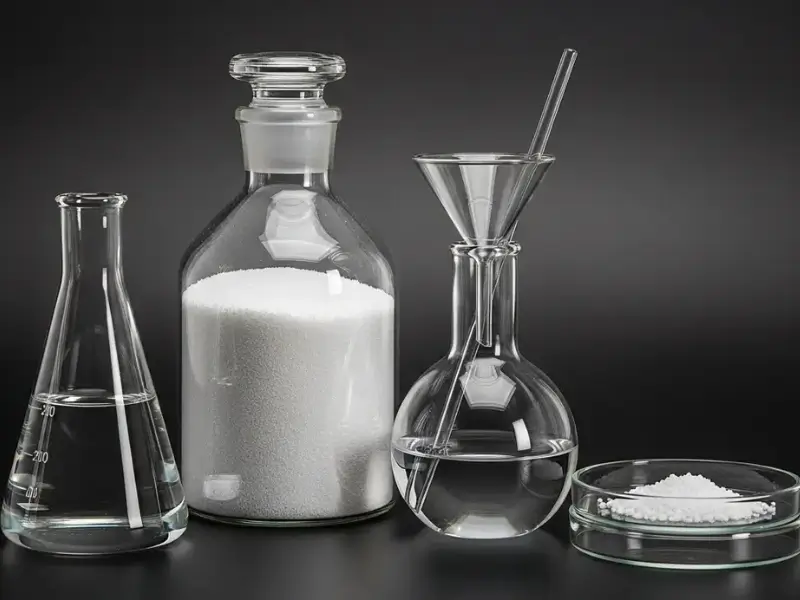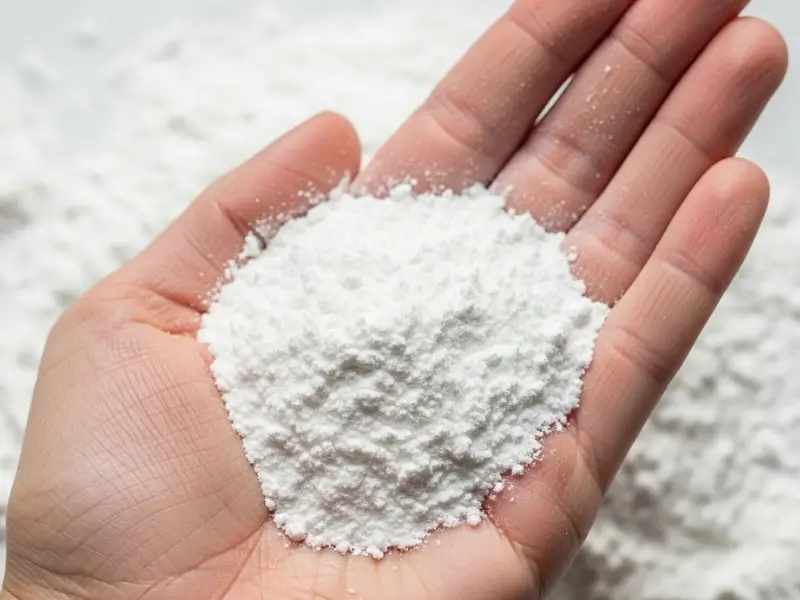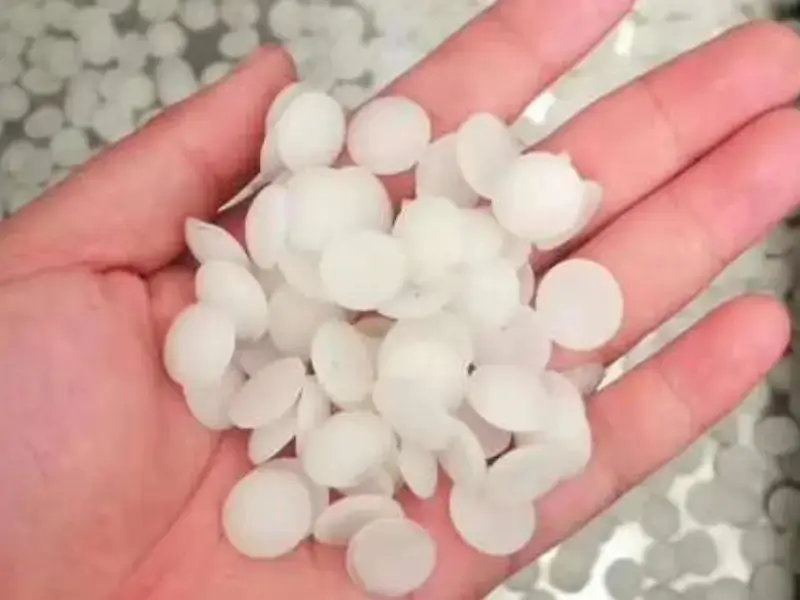In this article, we will explore how CPE resin is revolutionizing material selection across various industries. With the growing demand for versatile and durable materials, CPE resin stands out for its unique properties and applications. Understanding the significance of CPE resin can help businesses make informed decisions when selecting materials for their projects, ensuring optimal performance and cost-effectiveness. We will cover its chemical composition, physical properties, applications, advantages, and disadvantages, as well as future trends that could shape its further use.
1. Introduction to CPE Resin
CPE resin, or Chlorinated Polyethylene resin, is a versatile material derived from the chlorination of polyethylene. It has gained popularity in various industries due to its unique performance characteristics, which include enhanced chemical resistance, flexibility, and durability. These qualities make CPE resin an attractive option for applications in sectors such as automotive, construction, and electrical engineering. But here’s the kicker—CPE resin isn’t just a material; it is a solution to many of the challenges faced in demanding operating environments.
The importance of CPE resin cannot be overstated. As industries strive to create products that are not only effective but also sustainable, CPE resin emerges as a viable option that balances performance and environmental considerations. In this section, we will delve into the core attributes of CPE resin and its significance in the contemporary manufacturing landscape.
| Aspect | CPE Resin Characteristics | Industry Relevance |
|---|---|---|
| Material Type | Chlorinated Polyethylene | Used in demanding applications |
| Flexibility | High, allowing complex shapes | Enhances design capabilities |
| Chemical Resistance | Excellent resistance to various chemicals | Increases product longevity |
2. Chemical Composition of CPE Resin
To understand CPE resin, we must first examine its chemical composition. CPE is synthesized through the chlorination of polyethylene, a process that increases the material’s chemical resistance and overall stability. The chlorination process involves replacing hydrogen atoms in polyethylene with chlorine atoms, resulting in a polymer that maintains the base structure while enhancing its properties.
What’s the real story? The degree of chlorination affects the properties of CPE resin—lower chlorination levels yield a more flexible and less brittle material, while higher levels improve chemical resistance and durability. This flexibility allows manufacturers to tailor CPE resin to meet specific performance criteria based on application needs.
CPE resin is typically available in various grades, each designed for different applications based on its chlorine content, (see”Chlorinated Polyethylene (CPE) – Types, Properties, Uses & Structure”),which can range from around 25% to 45%. A deeper dive into the material’s chemical attributes reveals how its composition underpins its utility across various industries. It is crucial for businesses to understand these nuances to select the right grade for their specific requirements.
| Chlorination Level | Flexibility | Chemical Resistance |
|---|---|---|
| Low (25%) | High | Moderate |
| Medium (35%) | Moderate | High |
| High (45%) | Low | Very High |
3. Physical Properties of CPE Resin
CPE resin is renowned for its impressive physical properties. One of the standout features is its remarkable flexibility, which allows it to be easily molded into complex shapes without compromising its durability. This flexibility is particularly beneficial in applications where tight bends or intricate designs are necessary.
Ready for the good part? CPE also exhibits excellent tensile strength, making it capable of withstanding significant stresses without deformity or failure. Its thermal stability is another critical characteristic, allowing it to perform effectively across a broad range of temperatures. CPE resin can maintain its integrity under both high and low-temperature extremes, which is vital for applications in industries like automotive and construction where materials are often subjected to harsh environmental conditions.
Moreover, CPE offers good weather resistance, ensuring that products made from this resin can endure outdoor exposure without significant degradation. This resilience translates into longer-lasting products, reducing maintenance costs for businesses. Understanding these physical properties helps companies to make informed choices when selecting materials suited for their specific applications.
| Physical Property | CPE Resin Features | Benefit to Industries |
|---|---|---|
| Flexibility | High flexibility for design | Customization of product design |
| Tensile Strength | Excellent tensile strength | Enhanced product durability |
| Thermal Stability | Performs well across temperature ranges | Versatile for multiple environments |
4. Applications of CPE Resin
CPE resin has found extensive applications across various sectors due to its superior properties. One key area is the automotive industry, where CPE is used for flexible hoses, seals, and gaskets. These components require resilience against chemical exposure, high temperatures, and mechanical stress.
But here’s the kicker—CPE resin is not limited to just one sector. In construction, it is used in roofing membranes and waterproofing materials, providing weather-resistant solutions that ensure durability and longevity. CPE’s adaptability allows it to be integrated into complex architectural designs while maintaining structural integrity against environmental challenges.
Moreover, CPE is increasingly used in electrical applications, specifically in wire and cable insulation (as detailed in ”What Is Chlorinated Polyethylene Used For?”).Its moisture resistance and durability make it an ideal choice for protecting wiring in harsh climates or industrial settings. As the demand for reliable electrical systems grows, so does the reliance on CPE resin for insulation applications.
| Application Area | Usage Example | Benefits |
|---|---|---|
| Automotive | Flexible hoses, seals, and gaskets | Chemical resistance and flexibility |
| Construction | Roofing membranes and waterproofing materials | Enhanced durability against weather |
| Electrical Engineering | Wire and cable insulation | Moisture protection |
5. Advantages of Using CPE Resin
The advantages of CPE resin are numerous, making it a preferred choice for many companies. One of the most significant benefits is its exceptional flexibility, which allows for easy processing and molding. This flexibility opens up a world of possibilities in product design, enabling the creation of intricate shapes and forms that are vital in various applications.
Additionally, CPE resin is cost-effective compared to other similar materials. Its affordability does not compromise quality; instead, it offers a competitive edge by providing high performance at a lower investment. Manufacturers can save costs on both material expenses and labor due to CPE’s ease of handling and processing.
This is where it gets interesting—CPE also boasts excellent thermal and chemical resistance properties, allowing it to endure challenging operating conditions without losing performance. This feature is especially vital in industries where materials are subjected to aggressive environments, further underscoring CPE’s utility as a go-to material for many manufacturers.
| Advantage | Description | Impact on Usage |
|---|---|---|
| Flexibility | Can be easily molded into complex shapes | Increases design capabilities |
| Cost-Effectiveness | Competitive pricing for high performance | Reduces overall project costs |
| Thermal Resistance | Withstands high and low temperatures | Broadens application range |
6. Disadvantages of CPE Resin
Despite its many advantages, CPE resin does come with a few disadvantages that need to be considered. One major drawback is its vulnerability to certain solvents and aggressive chemicals. While it offers excellent chemical resistance overall, some strong solvents can lead to degradation over time. This limitation must be evaluated against the specific application requirements to prevent premature material failure.
Moreover, CPE may not perform optimally at very high temperatures compared to other materials, such as metal or specialized polymers. Industries that operate under extreme heat conditions may find CPE resin more suitable for moderate scenarios rather than extreme applications.
Additionally, while CPE’s cost advantage is notable, frequent replacements due to performance issues can result in higher long-term costs. Businesses need to weigh the initial savings against potential replacements and maintenance needs, as this evaluation can significantly impact overall budgeting and resource allocation.
| Disadvantage | Impact on Usage | Considerations for Manufacturers |
|---|---|---|
| Chemical Vulnerability | Prone to degradation in harsh environments | Limits use in aggressive applications |
| Temperature Limitations | May face challenges under extreme heat | Not ideal for every project |
| Long-Term Costs | Frequent replacements could increase expenses | Affects overall budget sustainability |
7. Comparison of CPE Resin with Other Materials
Understanding how CPE resin compares to other materials is essential for making informed choices. One key comparison is with PVC (Polyvinyl Chloride,as discussed in”How Chlorinated Polyethene Compares to PVC”. While both materials are widely used in construction and manufacturing, CPE resin typically offers better flexibility and chemical resistance, making it a superior choice for applications requiring these attributes.
What’s the real story? When compared to EPDM (Ethylene Propylene Diene Monomer rubber), CPE resin excels in applications where chemical exposure is significant, as EPDM may not hold up as well in certain environments. CPE’s chlorination improves its resistance to oxidants and chemicals, providing an edge in demanding settings.
Evaluating CPE resin against natural rubbers reveals distinct differences; while natural rubber may provide high elasticity, it lacks the chemical and thermal resistance that CPE offers. This analysis allows manufacturers to select the most appropriate material based on specific operational requirements and challenges they face.
| Material Comparison | CPE Resin Characteristics | Competitor Characteristics |
|---|---|---|
| PVC | Flexible and chemical resistant | Lower flexibility |
| EPDM | Superior chemical resistance | Less effective in harsh environments |
| Natural Rubber | Durable and elastic | Poor chemical and thermal stability |
8. Market Trends Concerning CPE Resin
The market for CPE resin is continuously evolving, influenced by various trends that shape its demand and applications. Currently, there is a growing emphasis on sustainable materials, prompting manufacturers to seek alternatives that offer lower environmental impacts. The transition toward greener manufacturing practices is pushing the development of bio-based CPE resins that maintain the performance characteristics of traditional versions.
Ready for the good part? Alongside sustainability, technological advancements enhance the production processes of CPE resin, allowing for more precise formulations tailored to specific applications. These innovations improve not just the performance but also the overall production efficiency, making CPE resin increasingly attractive to manufacturers.
Future projections suggest a steady increase in demand for CPE resin across industries, driven by its adaptability to meet changing needs. As companies prioritize longevity, safety, and performance, CPE resin’s role is set to grow, paving the way for new applications that capitalize on its inherent properties.
| Market Trend | Influence on CPE Resin | Future Projections |
|---|---|---|
| Sustainability | Increased demand for eco-friendly options | Growth of bio-based formulations |
| Technological Advancements | Enhanced production efficiency | More precise and tailored formulations |
| Adaptive Applications | Versatile use across different industries | Expanded market share in emerging sectors |
9. Sustainability Aspects of CPE Resin
In an era where environmental concerns are paramount, sustainability becomes increasingly critical in material selection. CPE resin presents several sustainability advantages that align with modern manufacturing demands. One aspect is its potential for recycling; many CPE products can be reprocessed and repurposed, leading to reduced waste and increased resource efficiency.
But here’s the kicker—efforts to develop biodegradable formulations of CPE resin are underway. These innovations aim to create materials that decompose more easily in the environment, addressing concerns over plastic waste and pollution.
Moreover, manufacturers using CPE resin often report lower emissions during production processes compared to other synthetic polymers. As businesses strive to reduce their carbon footprint, choosing CPE resin can contribute positively to environmental sustainability objectives while maintaining product performance.
| Sustainability Aspect | Description | Impact on Environmental Responsibility |
|---|---|---|
| Recycling Potential | Ability to be reprocessed and repurposed | Reduces landfill waste |
| Biodegradability | Development of environmentally friendly options | Decreases plastic pollution |
| Production Emissions | Lower emissions during manufacturing processes | Supports greener manufacturing practices |
10. Processing Techniques for CPE Resin
The processing of CPE resin requires specific techniques tailored to exploit its properties fully. Extrusion is one of the most common methods, where CPE is heated and forced through a die to create various shapes like sheets, films, or tubing. This method capitalizes on CPE’s flexibility, allowing for a wide range of product designs.
What’s the real story? Injection molding is another prevalent technique used for creating complex shapes by injecting molten CPE resin into molds. This technique is particularly advantageous for products requiring precision and intricate designs and is widely applied in automotive and consumer goods manufacturing.
Blending is also a common practice, where CPE is mixed with other materials to enhance characteristics like strength or reduce costs. This method allows for customizing the CPE resin properties to maximize performance in specific applications. Understanding these techniques enables manufacturers to optimize the production process and yield high-quality products tailored to market needs.
| Processing Technique | Description | Applications |
|---|---|---|
| Extrusion | Heating and forcing CPE through a die | Sheets, films, and tubing |
| Injection Molding | Molten CPE injected into molds | Complex shapes for various products |
| Blending | Mixing CPE with other materials | Customizing properties and reducing costs |
11. Case Studies: Successful CPE Resin Applications
To better understand the practical applications of CPE resin, let’s examine several successful case studies. In the automotive industry, a leading manufacturer utilized CPE resin for insulating cables in their latest model. This choice resulted in significant improvement in durability and flexibility, allowing the vehicle to perform reliably under various environmental conditions.
Another notable example comes from the construction sector. A company used CPE resin in roofing membranes, achieving outstanding waterproofing and longevity, despite extreme weather conditions. The resilience of CPE made it an ideal candidate for protecting building structures from seasonal elements.
In electrical applications, a major electronics manufacturer incorporated CPE resin in their wire sheathing, significantly reducing failures due to moisture exposure. This improvement enhanced product performance and extended the operational life of their electrical systems, showcasing CPE resin’s robust attributes in critical applications.
| Case Study Area | Implementation Example | Outcomes |
|---|---|---|
| Automotive | Cable insulation in a new vehicle model | Enhanced durability and performance |
| Construction | Roofing membranes for building projects | Improved waterproofing capabilities |
| Electrical Engineering | Wire sheathing for electronic devices | Reduced failures and extended lifespan |
12. Regulatory Standards for CPE Resin
Navigating the regulatory landscape is essential for industries utilizing CPE resin. Different regions have established standards governing the use of chemicals and materials, which are critical for businesses to adhere to. Regulatory compliance ensures that products meet safety and performance requirements while reducing risks to health and the environment.
In the United States, organizations such as OSHA (Occupational Safety and Health Administration) and EPA (Environmental Protection Agency) oversee regulations related to the safe use of chemicals, including CPE. Compliance with these regulations involves rigorous testing and documentation, ensuring that products are safe for consumers and the environment.
What’s the real story? Ensuring compliance may involve investing in safety training and ongoing monitoring of processes to adhere to these evolving standards. Staying informed about regulatory requirements is vital for companies wishing to avoid compliance issues and potential legal ramifications.
| Regulatory Body | Responsibilities | Compliance Importance |
|---|---|---|
| OSHA | Safety standards for workplace conditions | Protects employee safety |
| EPA | Environmental regulations on chemical use | Minimizes environmental impact |
| International Standards | Global compliance for chemical materials | Ensures market access and consumer safety |
13. Challenges in Working with CPE Resin
Although CPE resin has many benefits, challenges in working with it should be recognized. One prominent issue is the variability in quality from different suppliers. Companies must carefully source CPE resin to ensure they receive materials that meet their specific performance standards. Poor quality control can lead to product failures, undermining the reliability of applications.
Additionally, manufacturers face technical challenges during processing. CPE’s properties can make it difficult to achieve uniformity in thickness and performance, especially when blending with other materials. These difficulties underscore the need for expertise in processing techniques.
Lastly, the competitive landscape poses challenges as businesses seek to adapt to emerging materials and technologies. As the market evolves, companies using CPE resin must stay abreast of innovations while ensuring their offerings remain relevant.
| Challenge | Description | Implications for Businesses |
|---|---|---|
| Quality Variability | Inconsistent material properties from suppliers | Risk of product failures |
| Processing Difficulties | Challenges in achieving uniformity | Requires skilled expertise |
| Competitive Landscape | Need to adapt to new materials and technologies | Pressure to innovate continuously |
14. Future Innovations in CPE Resin
Looking to the future, innovations in CPE resin are poised to drive its adoption in new applications. One significant trend is the development of hybrid CPE formulations that combine the benefits of CPE with other polymers to enhance performance characteristics. These hybrids could further increase the versatility of CPE resin, making it suitable for applications previously dominated by other materials.
Moreover, advancements in processing technologies may lead to the creation of even more refined CPE products, tailored to specific end-use requirements. Companies investing in research and development in this space may gain a competitive edge through the introduction of high-performance materials that meet the stringent demands of modern industries.
But here’s the kicker—efforts towards sustainability will likely lead to innovations focused on the environmental impact of CPE resin production and disposal. As manufacturers push for greener alternatives, the future of CPE resin may see a shift towards more eco-friendly formulations without compromising performance.
| Future Innovation Area | Potential Developments | Expected Impact |
|---|---|---|
| Hybrid Formulations | Combinations with other polymers | Enhanced performance characteristics |
| Process Advancements | Innovations in manufacturing techniques | Improved efficiency and quality |
| Sustainability Efforts | Development of eco-friendly CPE options | Reduced environmental footprint |
15. Conclusion: Key Takeaways on CPE Resin
In summary, CPE resin represents a critical material for various industries, thanks to its unique properties such as flexibility, chemical resistance, and durability. Understanding these characteristics allows businesses to make informed decisions about material selection for their projects.
As industries continue to prioritize sustainability and performance, the demand for CPE resin is likely to grow. By staying abreast of market trends, processing techniques, and regulatory requirements, companies can leverage CPE resin’s attributes to enhance their product offerings and overall competitiveness. Transitioning to materials that align with modern environmental standards will be vital as businesses navigate the future landscape of manufacturing.
| Conclusion Summary | Key Attributes of CPE Resin | Future Implications |
|---|---|---|
| Unique Properties | Flexibility, chemical resistance, and durability | Growing demand in diverse applications |
| Importance of Innovation | Ongoing developments in formulations and processes | Ensuring relevance in changing markets |
FAQ Section
Q1: What is CPE resin?
CPE resin, or Chlorinated Polyethylene resin, is a versatile material known for its flexibility and chemical resistance, commonly used in various industries including automotive and construction.
Q2: How does CPE resin work?
CPE resin provides enhanced performance through its chlorinated structure, making it suitable for applications requiring resilience against chemicals and environmental stressors.
Q3: What are the advantages of using CPE resin?
The advantages of using CPE resin include high flexibility, cost-effectiveness, thermal stability, and excellent durability, making it an ideal choice for various applications.
Q4: What are the challenges in working with CPE resin?
Challenges with CPE resin include variability in quality, processing difficulties in achieving uniformity, and navigating a competitive landscape of evolving materials.
Q5: How is CPE resin environmentally sustainable?
CPE resin can be recycled, and efforts are underway to develop biodegradable formulations, making it a material that aligns with modern sustainability goals while maintaining performance.





